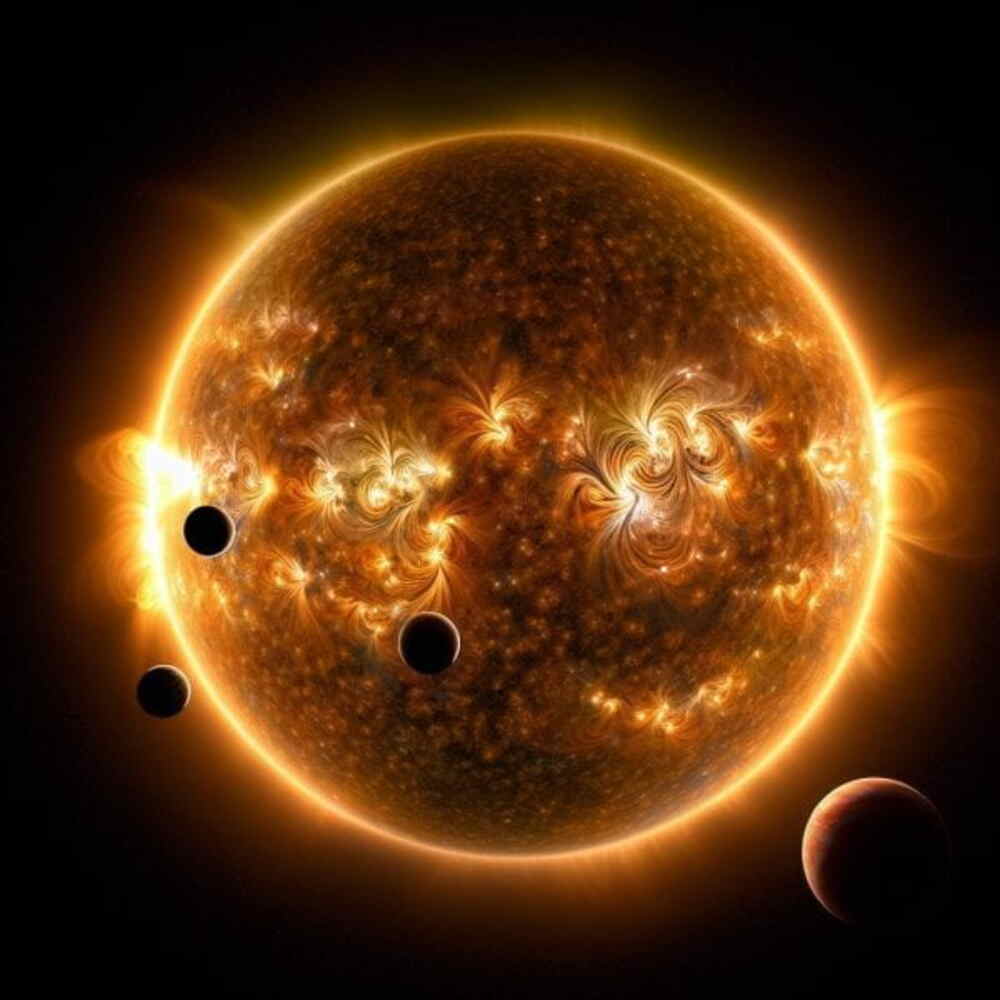BIOLOGY
UC Irvine-led team sheds light on distant solar system, unlocking secrets of planet formation

Supercomputer models and diverse perspectives are driving astronomical discoveries forward.
In a celestial feat that has left the scientific community in awe, a team of researchers led by the University of California, Irvine has unraveled the mysteries of planet formation and evolution in a distant solar system. Through the combined power of supercomputer models and diverse perspectives, this groundbreaking study has provided unparalleled insights into the characteristics and behaviors of exoplanets.
At the heart of this discovery lies TOI-1136, a dwarf star located more than 270 light years away from our planet. Compiling meticulous measurements obtained from a range of observatories, the team has shed light on the properties of the six confirmed exoplanets orbiting TOI-1136, as well as a potential seventh planet yet to be fully confirmed.
The research highlights the remarkable precision achieved by the team through their use of the TESS-Keck Survey. By combining transit timing variation (TTV) data from the Transiting Exoplanet Survey Satellite with radial velocity analysis of the star, the team was able to determine planetary mass readings of unprecedented accuracy.
Lead author Corey Beard, a UCI Ph.D. candidate in physics, describes the extraordinary effort behind this achievement. "It took a lot of trial and error, but we were really happy with our results after developing one of the most complicated planetary system models in exoplanet literature to date," Beard said.
One of the key factors that drives the team's enthusiasm for further research is the presence of multiple exoplanets in the TOI-1136 system. Co-author Paul Robertson, UCI associate professor of physics and astronomy, highlights the advantage of studying systems with multiple planets: "We can control for the effects of planet evolution that depend on the host star, and that helps us focus on individual physical mechanisms that led to these planets having the properties that they do."
The significance of examining exoplanets within the same system cannot be overstated. Unlike comparing planets in separate solar systems, which introduces numerous variables based on the diverse nature of their host stars and locations, studying exoplanets within the same system allows scientists to explore the effects of similar histories and draw meaningful comparisons.
TOI-1136's youthfulness adds another layer of fascination to this system. At just 700 million years old, the star is considered young, with heightened activity such as magnetism, sunspots, and solar flares. These dynamic processes have a significant impact on the evolution of the planets in the system, shaping their atmospheres and influencing their potential habitability.
The confirmed exoplanets in the TOI-1136 system, classified as "sub-Neptunes" by experts, offer a new and intriguing perspective on planetary diversity. Rae Holcomb, a UCI Ph.D. candidate in physics and co-author of the study, remarks, "They're weird planets to us because we don't have anything exactly like them in our solar system. But the more we study other planet systems, it seems like they may be the most common type of planet in the galaxy."
An additional enigmatic aspect of this solar system is the potential presence of a seventh planet, yet to be conclusively identified. Scientists have detected evidence of resonant forces among the exoplanets, indicating a harmonious relationship in their orbits. This resonance can either destabilize or enhance the stability of the system, offering valuable insights into the dynamics of planetary interactions.
While this study has brought us closer to understanding the intricacies of planet formation and evolution, there is still much more to explore. The team expresses their eagerness to delve into the composition of planetary atmospheres, a field that could be revolutionized by the advanced spectroscopy capabilities of NASA's James Webb Space Telescope.
The collaborative effort among researchers from institutions worldwide, including Spain's Astrophysics Institute of the Canary Islands, Sweden's Chalmers University of Technology, and Japan's Ritsumeikan University, demonstrates the power of diverse perspectives in unraveling astronomical mysteries. By combining their expertise and resources, these scientists have made enormous strides toward unlocking the secrets of the universe.
As we venture into the vast depths of space, armed with supercomputer models and an inclusive mindset, we are reminded of the profound impact our collective knowledge and determination can have on uncovering the mysteries that surround us. With every discovery, we forge new pathways of understanding, inspiring generations to come in the eternal quest for knowledge and exploration.

